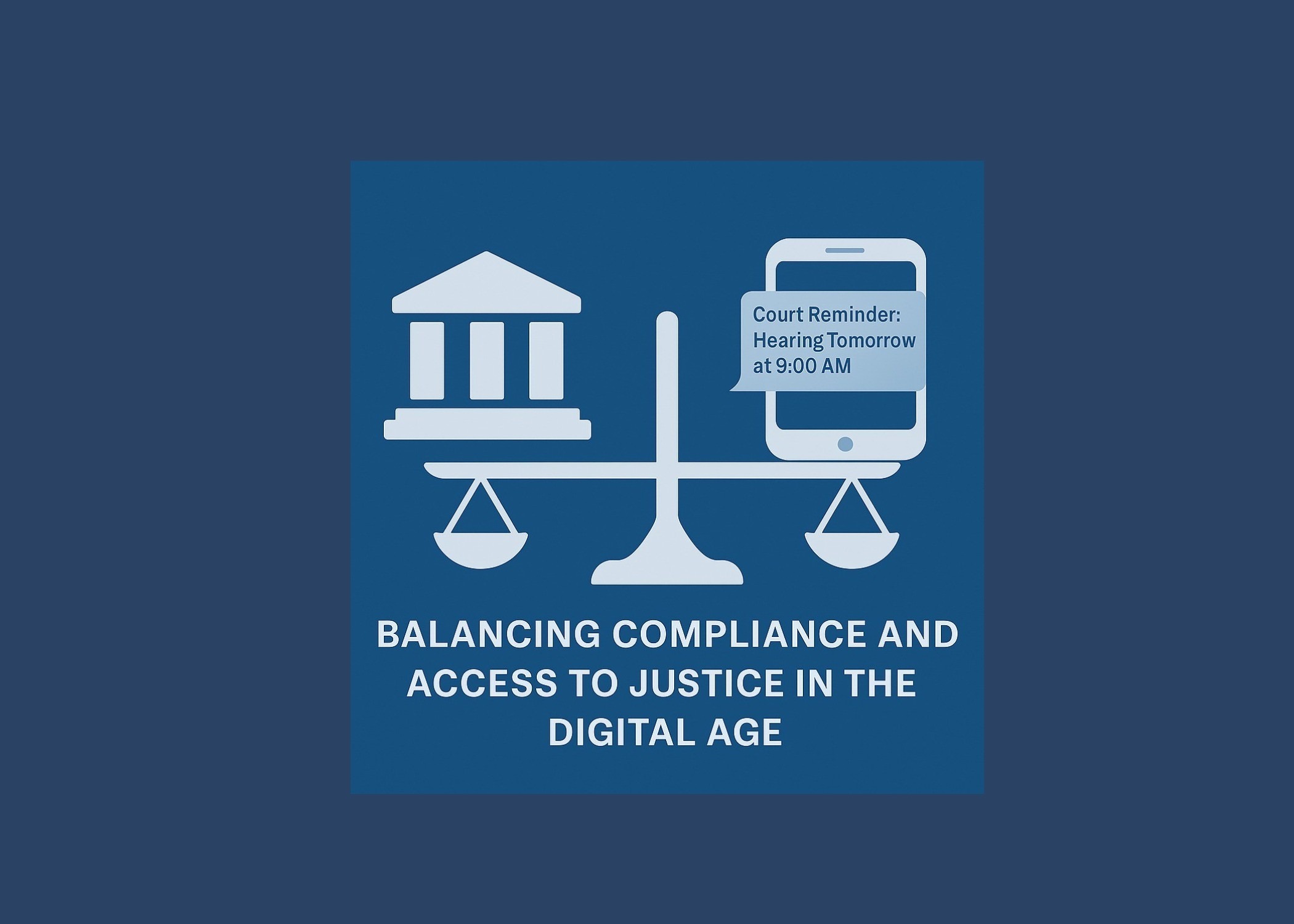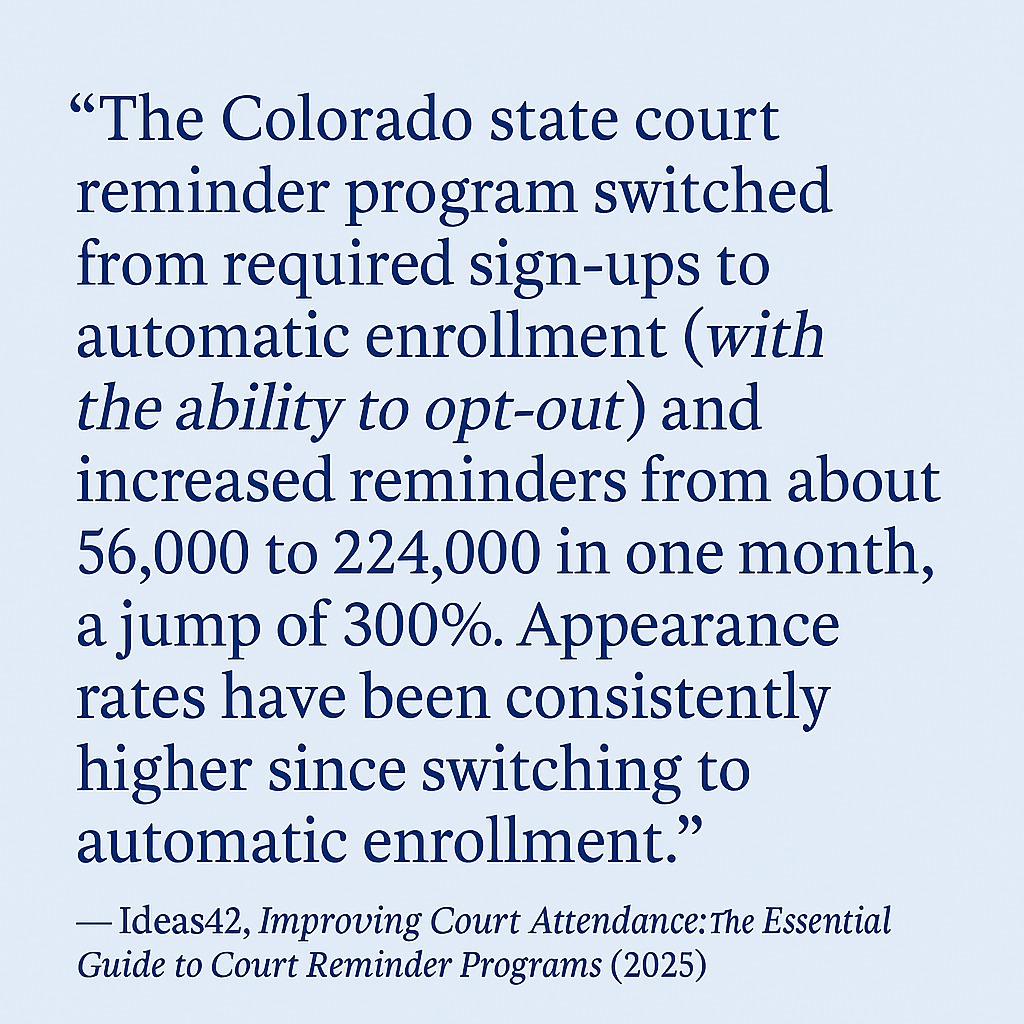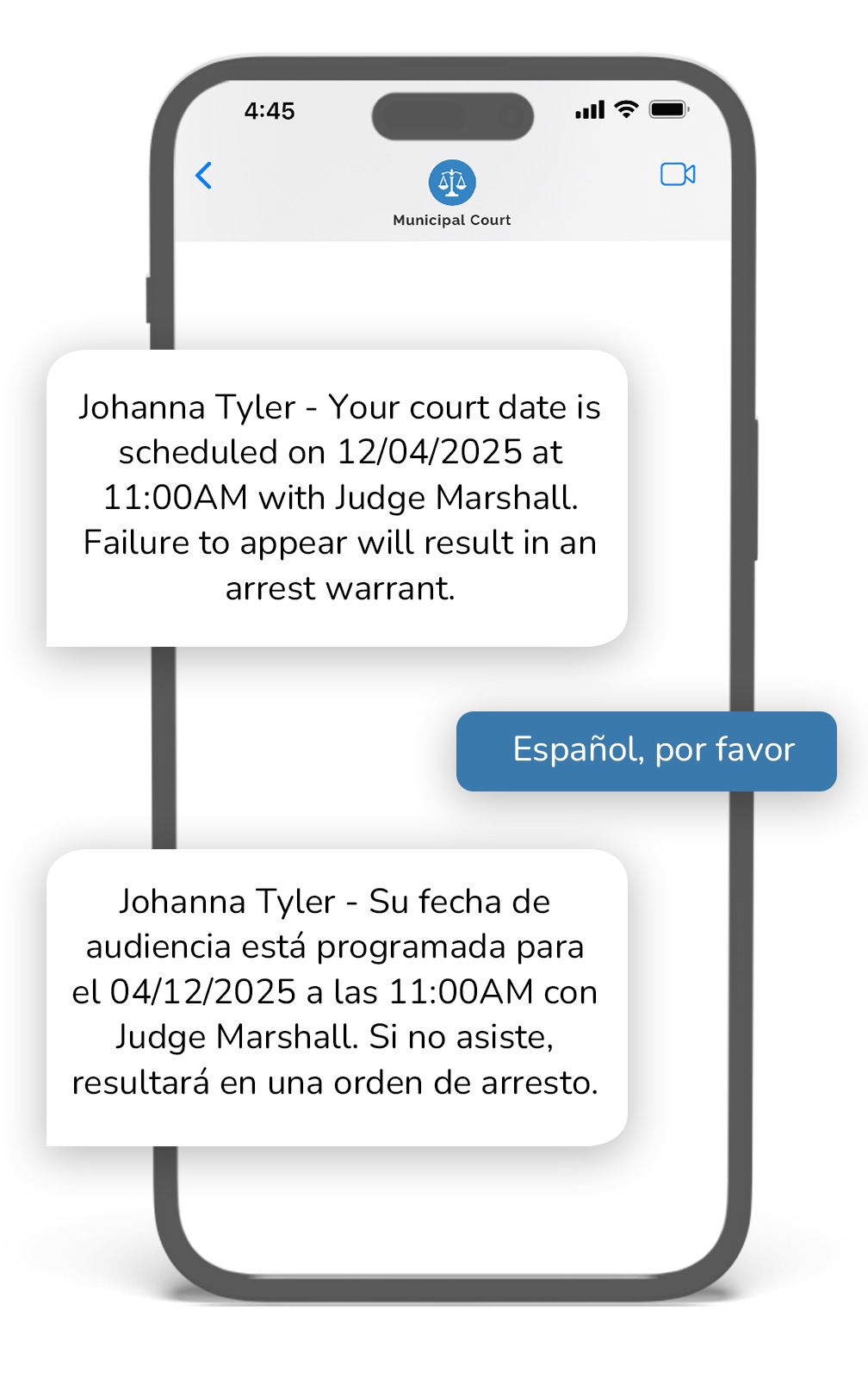Disclaimer: I am not a lawyer, and this article should not be taken as legal advice. It offers practical administrative approaches based on federal and state compliance standards and the National Center for State Courts (NCSC) guidance on electronic reminders. Courts and agencies should always consult their attorney or legal counsel before implementing or changing communication policies.
Understanding the Landscape
Courts nationwide are adopting text message reminders to reduce no-shows, enhance communication, and build public trust. With this update comes an important question: When and how should courts get consent to send these messages?
Federal and state laws, especially the Telephone Consumer Protection Act (TCPA), related Federal Communications Commission (FCC) rules, and a patchwork of state "mini-TCPA" laws, regulate how automated text messages can be sent. These laws were primarily designed for commercial marketing, not for court or government communications. However, they establish the legal boundaries that courts must operate within.
The challenge for the courts is balancing legal compliance with ensuring access to justice. Excessive strictness, like requiring opt-in consent for every message, can unintentionally harm the very people the system aims to serve.
What the Law Says
Under the TCPA, organizations cannot use an automatic telephone dialing system (ATDS) or a prerecorded or artificial voice to contact a cell phone without prior consent.
In Facebook, Inc. v. Duguid (2021), the U.S. Supreme Court clarified that a system qualifies as an autodialer only if it uses a random or sequential number generator to store or produce phone numbers. Most court reminder systems, including eCourtDate, send texts to known participants from stored case records, not random numbers, which means they fall outside the TCPA's autodialer restrictions.
Recent cases such as Trim v. Reward Zone USA LLC (2023) and Soliman v. Subway Franchisee Advertising Fund Trust (2024) confirmed that text messages do not include an artificial or prerecorded voice. In other words, text-only notifications cannot violate the TCPA's "robo-voice" rule because no voice is transmitted.
In 2023, the FCC implemented new rules that require clear and simple opt-out options for all automated texts. Starting in April 2025, any automated or recurring message must respond to a "STOP" reply within ten business days. The FCC delayed the broader rule requiring a single opt-out to apply to all messages from a sender until 2026.
Although court reminders are not considered commercial messages, following these rules shows transparency and helps build trust with recipients.
State Rules and the Role of NCSC Guidance
Several states, such as Texas, Florida, and Oklahoma, have passed their own "mini-TCPA" laws. These state statutes focus on commercial solicitations rather than government or judicial communications.
For example, Texas Senate Bill 140 (effective September 1, 2025) covers only text messages made "to induce a purchase or sale." Similarly, Florida's and Oklahoma's laws apply to promotional or advertising texts.
A court sending a reminder about an appearance date is not a solicitation and therefore falls outside the scope of those state laws. Still, courts should understand these regulations to avoid confusion. The law provides the boundaries, but the NCSC provides the playbook.
The NCSC eReminders Toolkit (2024) recommends automatic enrollment with an explicit opt-out as the fairest and practical approach. The report notes that requiring participants to opt in can create barriers, especially for individuals with limited literacy, language access, or technology skills.
According to the eReminders Toolkit, courts should avoid designs that require users to opt in, as this can reduce participation and may disadvantage court users with limited literacy, language access, or technology skills.
The goal of any reminder program should be to ensure people receive notice, not to create new points of failure.
When the Text Message Is the Notification
In some jurisdictions, the text message itself serves as the official notification, not an optional reminder.
If the court already authorizes text notification as a formal method of notice, then requiring a separate opt-in could have disastrous consequences. It might prevent defendants from receiving critical court information and disrupt caseflow.
The Ideas42 Improving Court Attendance Guide (2025) emphasizes that automatic enrollment systems are more equitable and significantly more effective. Behavioral evidence from multiple jurisdictions indicates that opt-out reminder programs increase appearance rates by 20 to 30 percent, whereas opt-in programs tend to have lower participation and exacerbate equity gaps.
Courts should therefore differentiate between consent required by law and procedural participation that supports due process. The best practice is to offer automatic inclusion with clear information and an easy opt-out. This method ensures compliance while guaranteeing that individuals receive prompt, fair, and equal notice.
eCourtDate's Recommended Approach
At eCourtDate, our approach parallels NCSC's: make participation the default, protect individual choice, and ensure legal defensibility.
We help courts and government agencies build compliance into every step of the communication process by:
-
Collecting mobile numbers during case intake is part of the normal administrative process.
-
Providing a clear disclosure that text reminders may be sent about court events.
-
Including "Reply STOP to opt out" in every message and immediately honoring that request.
-
Keeping audit logs of all messages, consents, and opt-outs for accountability.
-
Using official, registered numbers that meet carrier and CTIA A2P 10DLC requirements.
-
Avoiding any language that could be perceived as marketing or solicitation.
This model protects the court, respects the recipient, and aligns with both legal expectations and access-to-justice goals.
Balancing Law and Access
Compliance and accessibility are not opposing goals. The TCPA and state laws set the boundaries for communication, while NCSC and Ideas42 provide the practical framework for fairness and effectiveness. Courts that align both will see higher appearance rates, fewer failures to appear, and stronger trust between the public and the justice system.
This article is for informational purposes only and does not constitute legal advice. Always consult your attorney or legal counsel before implementing any messaging program.
References (for informational use only)
CTIA. (2023, May). Messaging Principles and Best Practices.
Facebook, Inc. v. Duguid, 141 S. Ct. 1163 (2021).
Federal Communications Commission. (2023, March). Report and Order: Revocation of Consent Rules for Robocalls and Robotexts.
Federal Communications Commission. (2024, February 8). Declaratory Ruling on AI-Generated Voice Calls.
Ideas42. (2025). Improving Court Attendance: The Essential Guide to Court Reminder Programs. New York, NY.
Ideas42 & National Center for State Courts. (2023). The National Guide to Improving Court Appearance. Williamsburg, VA.
National Center for State Courts. (2024). eReminders Toolkit. Williamsburg, VA.
Soliman v. Subway Franchisee Advertising Fund Trust, 101 F.4th 176 (2d Cir. 2024).
Texas Senate Bill 140, 88th Legislature, Regular Session (2025).
Trim v. Reward Zone USA LLC, 76 F.4th 1157 (9th Cir. 2023).

About Greg Shugart
Director of Government Relations
Greg Shugart brings over 30 years of public sector experience to the eCourtDate team, with a background in court administration, criminal justice reform, and government operations. He previously served as Criminal Courts Administrator for Tarrant County, Texas, where he led statewide-recognized initiatives in pretrial modernization, court communications, and system efficiency. Greg now contributes to eCourtDate’s strategy and partnerships, helping agencies implement technology that improves access, compliance, and trust in the justice system.


